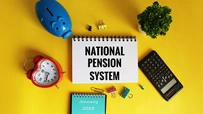RBI’s New Digital Payment Authentication Rules: Risk-Based Checks Beyond 2FA Explained
Disclaimer: This blog contains generic information. Ujjivan isn’t responsible for the accuracy of the information mentioned herein.
October 09, 2025

The Reserve Bank of India has released a fresh set of directions that define how digital payments in India are verified. RBI released a circular on 25 September 2025, Titled the Authentication Mechanisms for Digital Payment Transactions Directions, 2025. These rules will come into force on April 1, 2026, giving banks, card issuers, and payment firms the opportunity to rebuild their security frameworks.
The new framework applies across the payment ecosystem. This includes all banks, card networks, fintech platforms, payment gateways, and wallet operators. It marks a step toward more secure digital commerce without making the process slower or more complicated for the end user.
Why Did RBI Introduce Rules Beyond Traditional 2FA?
The motivation behind the new rules is simple. Cyber fraud has become smarter than the old defences. RBI data shows a consistent rise in phishing, SIM-swap, and device-spoofing cases, many of which bypass SMS-based OTPs.
At the same time, India’s payment infrastructure has matured. The rapid adoption of biometrics, device-binding technology, and tokenisation now allows for authentication systems that can learn from user behaviour instead of treating every transaction the same.
RBI’s 2025 directions aim to align India's financial sectors with evolving global practices, ensuring safety without sacrificing convenience.
What Does “Risk-Based Authentication” Mean in Digital Payments?
Risk-based authentication means that not every transaction needs the same level of security. The system learns from context—who you are, how much you are spending, where you are logging in from, and what device you are using.
If you are making a small payment from a familiar device, the system may let it through with minimal verification. But if an unusual transaction appears, it may prompt for risk-based authentication.
The result is a balance that India’s payment users have long needed. High security for high-risk actions and frictionless ease for everyday payments.
What are the Key Highlights of RBI’s 2025 Authentication Framework?
The new framework builds on existing 2FA but introduces flexibility and accountability. While 2FA remains the minimum, RBI encourages issuers to add more layers of protection for riskier transactions. In other words, the regulator is shifting from a rule-based to a risk-based model.
The directions also make accountability straightforward. Banks and card issuers will bear the liability for any loss arising from weak authentication or non-compliance.
When Will the New RBI Authentication Rules Take Effect?
The new authentication framework officially takes effect on April 1, 2026. RBI deliberately provided a long runway to give banks, card networks, and payment intermediaries enough time to test and certify their systems.
The regulator has also outlined a transition roadmap through 2025, under which entities must:
During this preparatory phase, RBI plans to coordinate with the National Payments Corporation of India (NPCI) and leading card networks to ensure interoperability across platforms. By April 2026, every digital payment made in India will have to pass through a dynamic, data-driven security filter.
Final Thoughts
For years, RBI's focus was on building trust in digital payments through strict, uniform rules like OTP-based 2FA. That trust now exists. RBI is refining security systems to become intelligent, invisible, and proportionate to the risk involved.
The approach aligns India with advanced payment ecosystems where adaptive authentication is the norm. It will strengthen user confidence while freeing the industry from repetitive verification steps that slow down innovation.
Disclaimer:
The contents herein are only for informational purposes and generic in nature. The content does not amount to an offer, invitation or solicitation of any kind to buy or sell, and are not intended to create any legal rights or obligations. This information is subject to updation, completion, amendment and verification without notice. The contents herein are also subject to other product-specific terms and conditions, as well as any applicable third-party terms and conditions, for which Ujjivan Small Finance Bank assumes no responsibility or liability.
Nothing contained herein is intended to constitute financial, investment, legal, tax, or any other professional advice or opinion. Please obtain professional advice before making investment or any other decisions. Any investment decisions that may be made by the you shall be at your own sole discretion, independent analysis and evaluation of the risks involved. The use of any information set out in this document is entirely at the user’s own risk. Ujjivan Small Finance Bank Limited makes no representation or warranty, express or implied, as to the accuracy and completeness for any information herein. The Bank disclaims any and all liability for any loss or damage (direct, indirect, consequential, or otherwise) incurred by you due to use of or due to investment, product application decisions made by you on the basis of the contents herein. While the information is prepared in good faith from sources deemed reliable (including public sources), the Bank disclaims any liability with respect to accuracy of information or any error or omission or any loss or damage incurred by anyone in reliance on the contents herein, in any manner whatsoever.
To know more about Ujjivan Small Finance Bank Products Visit:"https://www.ujjivansfb.in"
All intellectual property rights, including copyrights, trademarks, and other proprietary rights, pertaining to the content and materials displayed herein, belong
to Ujjivan Small Finance Bank Limited or its licensors. Unauthorised use or misuse of any intellectual property, or other content displayed herein is strictly prohibited and the same is not intended for distribution to, or use by, any person in any jurisdiction where such distribution or use would (by reason of that person’s nationality, residence or otherwise) be contrary to law or registration or would subject Ujjivan Small Finance Bank Limited or its affiliates to any licensing or registration requirements.
FAQs
1. What are RBI’s new digital payment authentication rules?
The Reserve Bank of India has issued the Authentication Mechanisms for Digital Payment Transactions Directions, 2025. These rules introduce risk-based authentication that adapts to transaction risk.
2. When do the new authentication rules come into effect?
They will be implemented from April 1, 2026. This gives financial institutions time to upgrade systems and conduct testing.
3. Does RBI’s new rule remove two-factor authentication (2FA)?
No. 2FA remains the minimum standard. However, institutions are encouraged to add smarter, context-aware checks. Such as biometrics, device tokens, or behavioural analysis when the transaction risk is higher.
4. What does “risk-based authentication” actually mean?
It means every transaction will be evaluated in real time. Factors like device, amount, location, and spending pattern decide whether extra verification is needed. A small payment from a trusted device might pass instantly, while an unusual one could trigger additional checks.
5. What new methods can replace OTPs under this system?
Banks can use a mix of biometric verification, cryptographic keys, device fingerprinting, or in-app confirmations to authorise payments. These are faster, harder to spoof, and more user-friendly than SMS OTPs.
6. Will customers have to install new apps or change how they pay?
No. Most banks will integrate these new verification layers within their existing mobile apps or payment interfaces. Users will only notice smoother authentication not a completely new process.
7. How will this benefit India’s digital payment users in the long run?
Users will experience fewer interruptions, faster checkouts, and stronger protection against fraud. By shifting to adaptive, data-driven security, India is setting the stage for safer, more intelligent digital payments worldwide.





